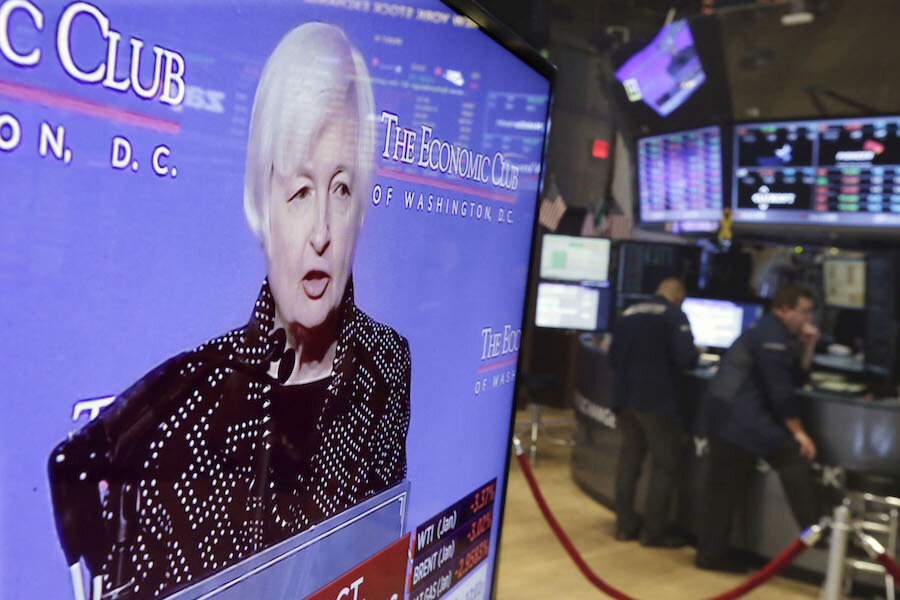US economy adds 211,000 jobs in November. Interest rate hike looms
Loading...
For months now, the November jobs report has been hotly anticipated as a marker not just for how well the economy is doing, but a hint at how the country’s most important bank would move to shape it . Happily, it did not disappoint.
The US economy added 211,000 jobs in November, a measure better than the 196,000 jobs economists were expecting, according to data released Friday by the Labor Department. The unemployment rate held steady at 5.0 percent. The report marked the 69th straight month of job growth in the United States.
“October’s data were also revised higher, adding to the upbeat picture,” MarkIt economist Chris Williamson writes via e-mail. “The unemployment rate…sits at a seven and a half year low, highlighting the tightness of the labour market by historical standards.”
The report was in line with job growth typical of the past year. In 2015, the economy has added about 210,000 jobs per month on average. Wages, another closely-watched portion of the monthly report, have also shown steady growth. Hourly earnings increased 0.2 percent in November and have risen 2.3 percent in 2015.
Economy watchers have been zeroed in on the November employment report throughout the fall, anticipating it as the final go-ahead for the Federal Reserve to raise key interest rates from near-zero percent for the first time since 2006. The Fed wouldn’t be looking for dazzling jobs numbers, necessarily, but rather further evidence that the US economy is stable and headed in the right direction (even if slowly).
That stability was called into question earlier this year. Through the summer, many experts anticipated an October rate hike. Shakiness in the global economy, however, and a string of sub-par economic reports in the US, including a couple of relatively underwhelming jobs reports, made that earlier hike seem like a riskier proposition. Now that the economy has weathered that rocky stretch and continued on the slow but steady path of the past couple of years, the consensus is that December liftoff is all but inevitable.
“The economy is showing no sign of succumbing to worries about the global outlook, as had been feared recently, and…domestic demand is strong enough to withstand an initial hike in interest rates from what were seen as emergency record-low levels some six years ago, “ Mr. Williamson writes. “A December rate hike now looks to be in the bag.”
To prevent spooking the financial markets, Fed officials have been hinting strongly at the possibility of a December hike for several weeks. In a speech to the Economic Club of Washington on Wednesday, Federal Reserve chair Janet Yellen gave an upbeat assessment of the economy’s growth and warned that waiting too long to raise rates could make it a more jarring process in the longer run.
“Such an abrupt tightening would risk disrupting financial markets and perhaps even inadvertently push the economy into recession, Ms. Yellen said. “On balance, economic and financial information received since our October meeting has been consistent with our expectations of continued improvement in the labor market.”
Still concerns linger over certain aspects of the current job market. Labor force participation, or the percentage of Americans working or actively searching for work, has been stuck near four-decade lows for several months; it rose slightly to 62.5 percent in November. The worry is that the job market was so bad for so long that millions of Americans have given up on working altogether, and the continued slack is keeping wages from rising more quickly.
Policymakers have given the job market a lot of wiggle room in terms of future growth. In remarks to Congress Thursday, Yellen said the economy would have to add 100,000 jobs a month, much below its current rate of growth, to account for new entrants streaming into the workforce.
Above that clip, “we we expect that wage inflation will gradually begin to rise,” IHS Global Insight economist Nariman Behravesh writes in an e-mailed report. “All of this is consistent with a labor market that is beginning to tighten.”
The Federal Reserve will meet next week to decide on whether to raise rates, and most analysts anticipate the rate liftoff will be announced on Dec. 16.








